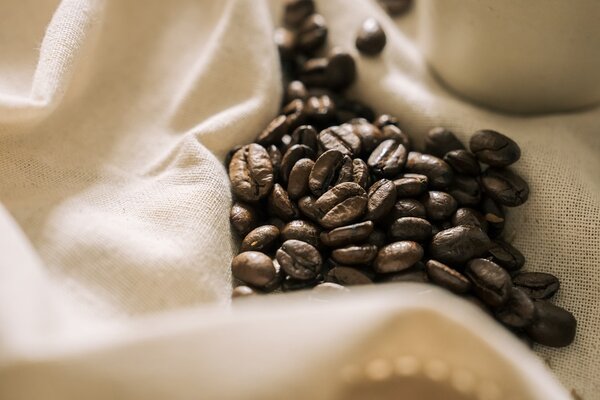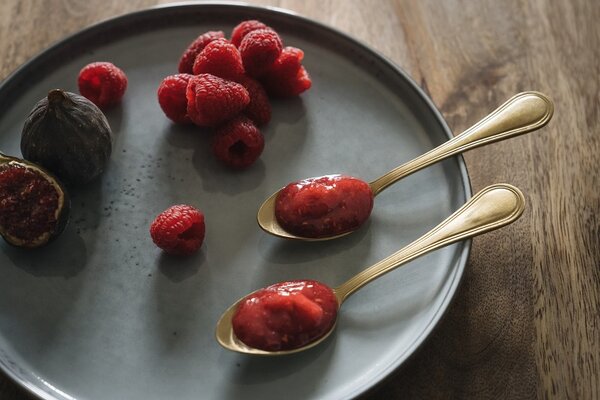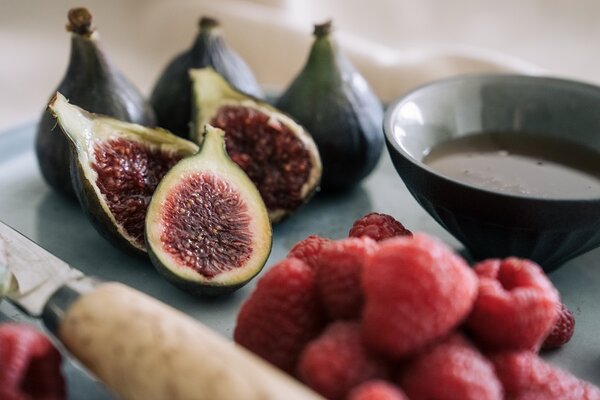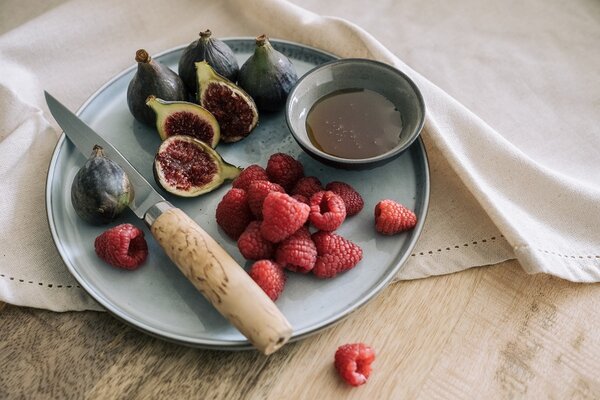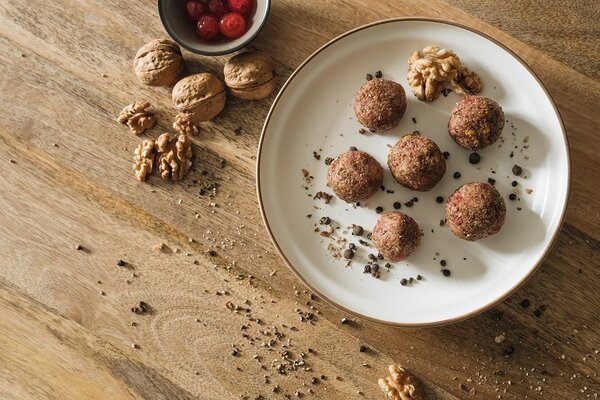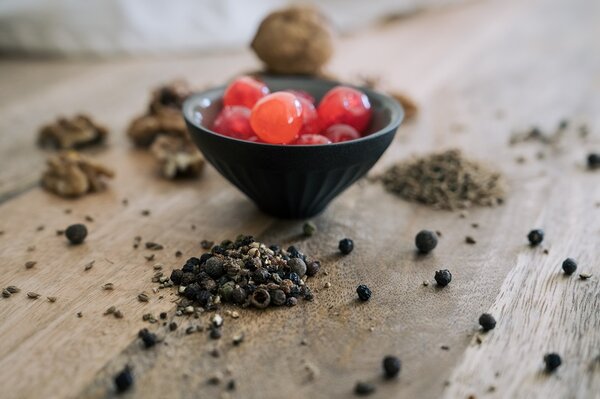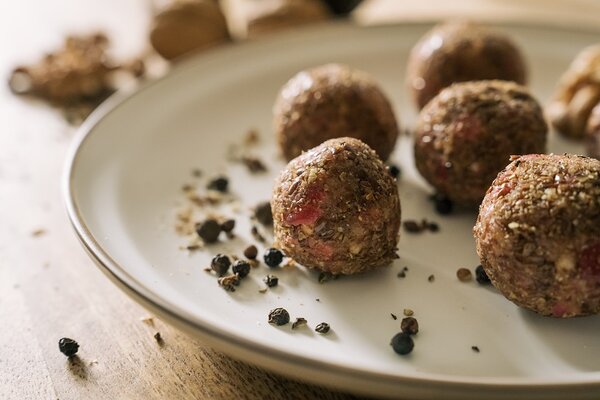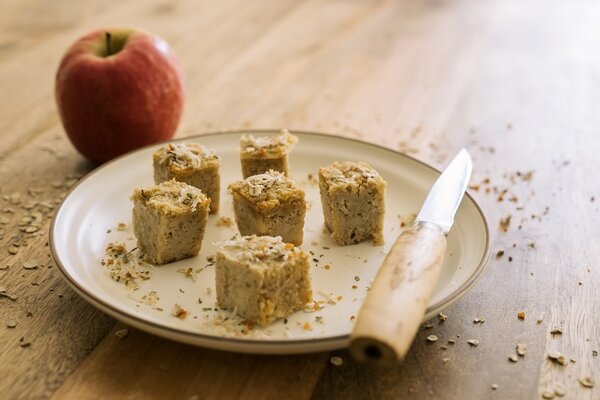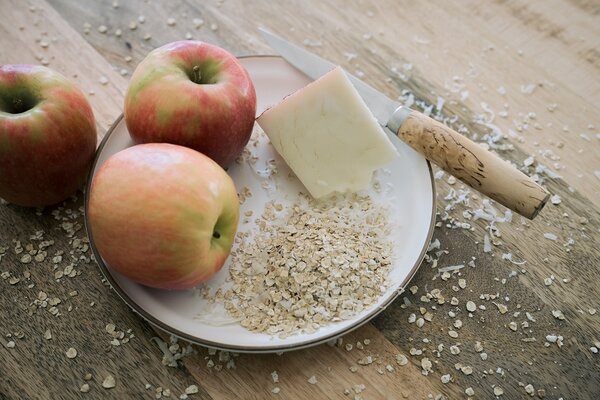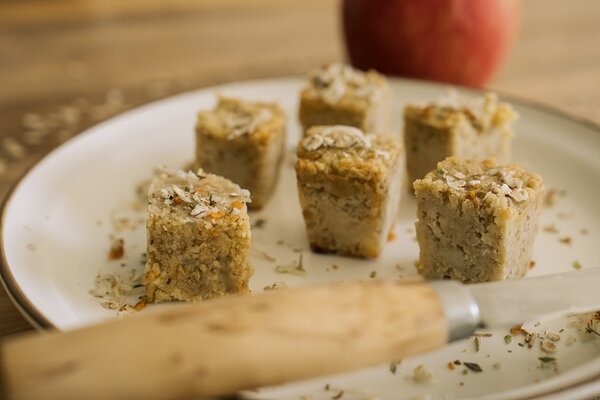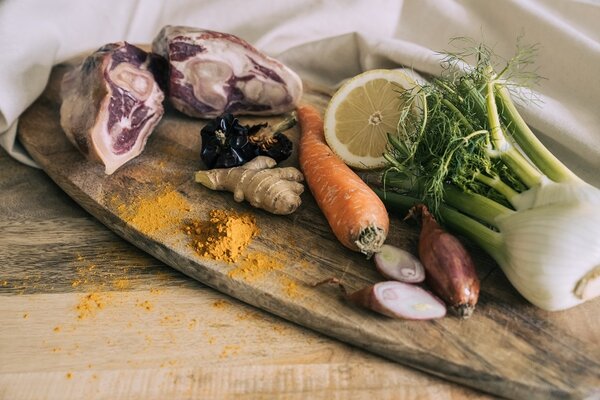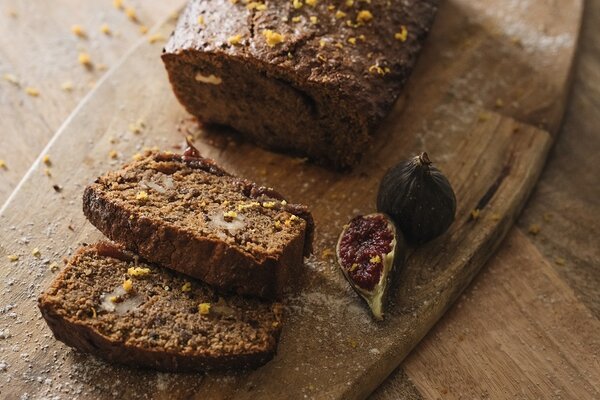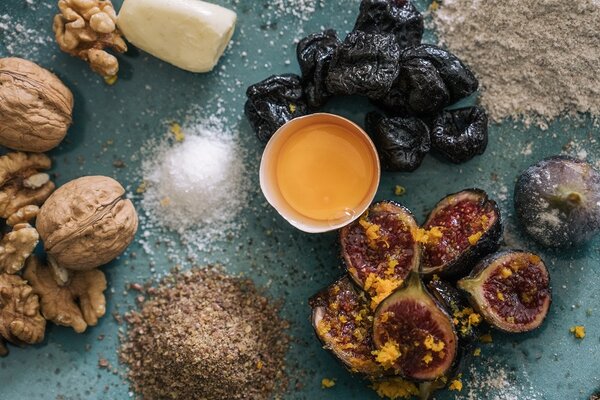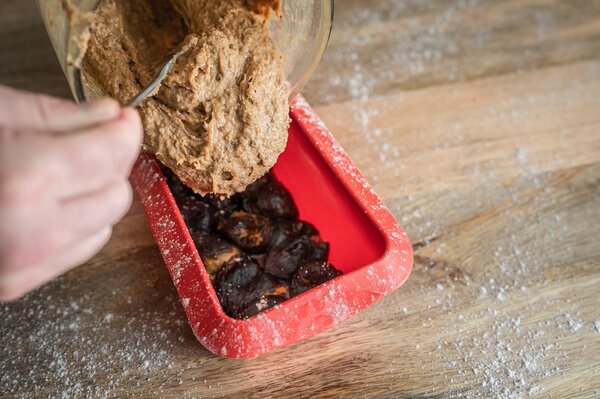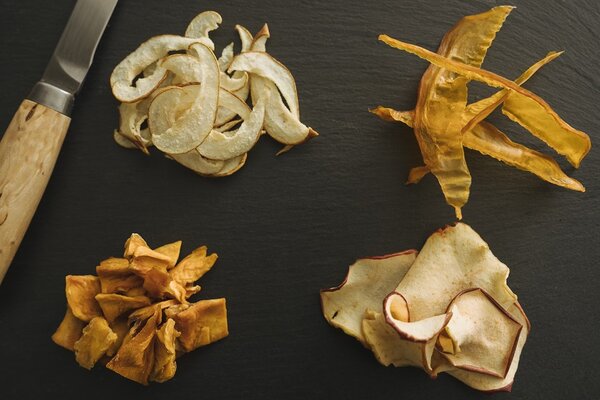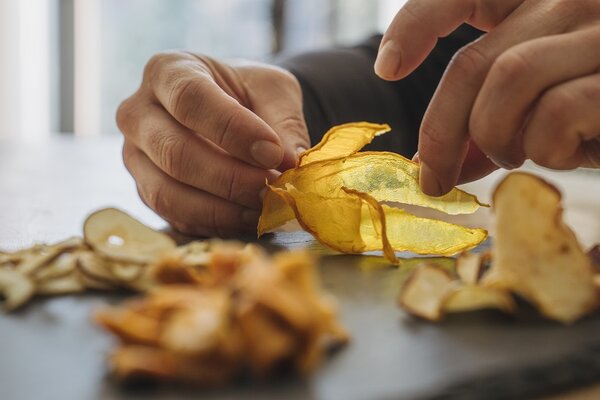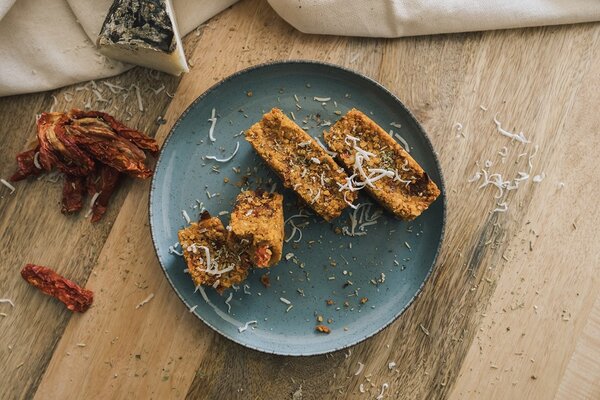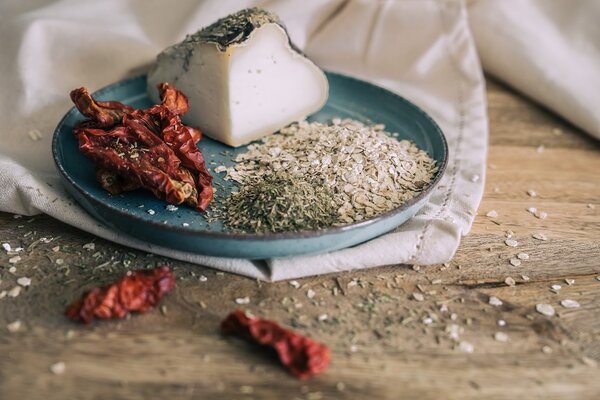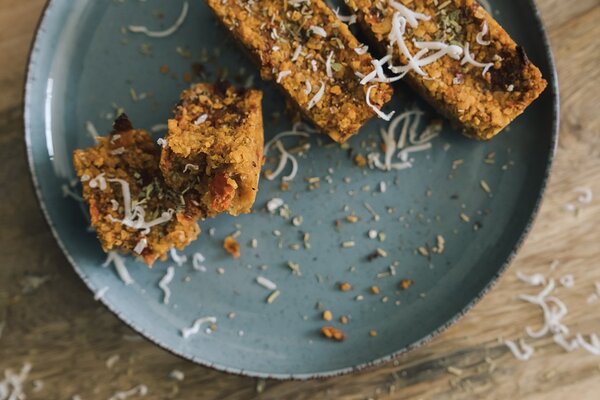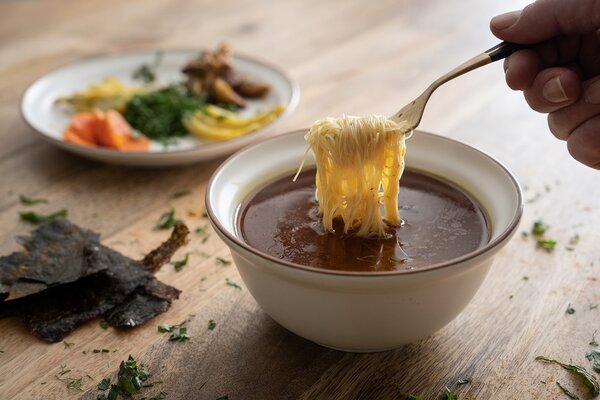
Ingredients: Makes 1 liter
1 beef or ham bone, preferably with marrow. Can be omitted if you’re vegetarian or vegan.
1/2 lemon
4 shallots, peeled and halved
3 carrots, roughly chopped
1 fennel bulb, roughly chopped
1 dried pepper
Thumb-sized piece of ginger, peeled
2 tsp sea salt
2 tsp black pepper
2 tsp turmeric powder
1 tsp chili paste - can be omitted
2 tbsp sunflower or rapeseed oil
2 liters water
Optional – to serve
- Rice or soba noodles
- Dried seaweed
- Vegetables and meat from the broth making
Method:
Heat the oil in a large pot. When warm, lightly caramelize the lemon, shallots, fennel and ginger.
Add the chili paste, spices and cook for 1 minute.
Add the water, carrots, bone and salt & pepper.
Bring to the boil, reduce to a low simmer, cover and cook for 2-3 hours.
Allow to cool, pass through a sieve, keep the vegetables and any meat left on the bone.
Store the broth in Tupperware in the fridge.
NB, if you want to remove any fat, it will solidify on the surface of the broth overnight so can be carefully removed with a spoon.
On the hill:
If you’re heading out for a winter’s day in the mountains the next day, heat up the broth and transport it in an insulated flask.
At home:
If drinking the broth as a post-adventure refuel, you can add the additional vegetables and noodles to increase the nutritional aspect.
Inspiration
All too often we throw away vegetables that look a little past their best.
Instead, use these vegetables as a base for a warming broth. If you want to increase the protein and fats in the broth, add a marrow bone. If you ask your butcher nicely, they may give you the bone for free.


